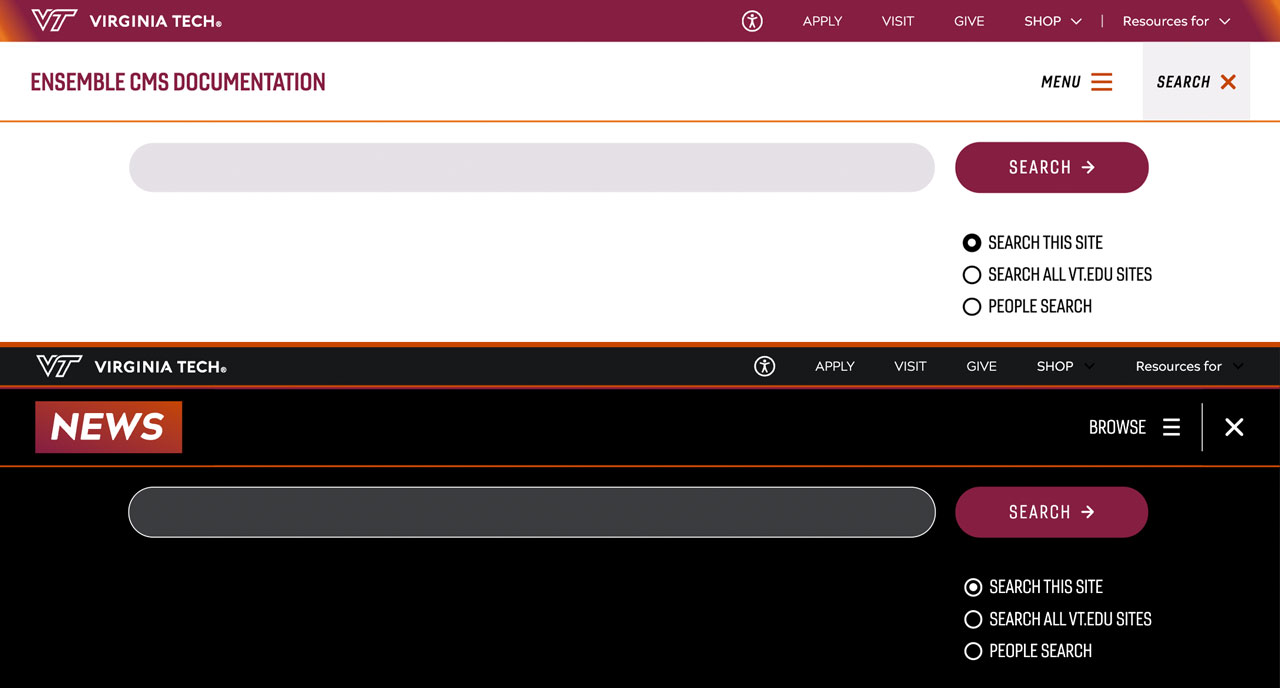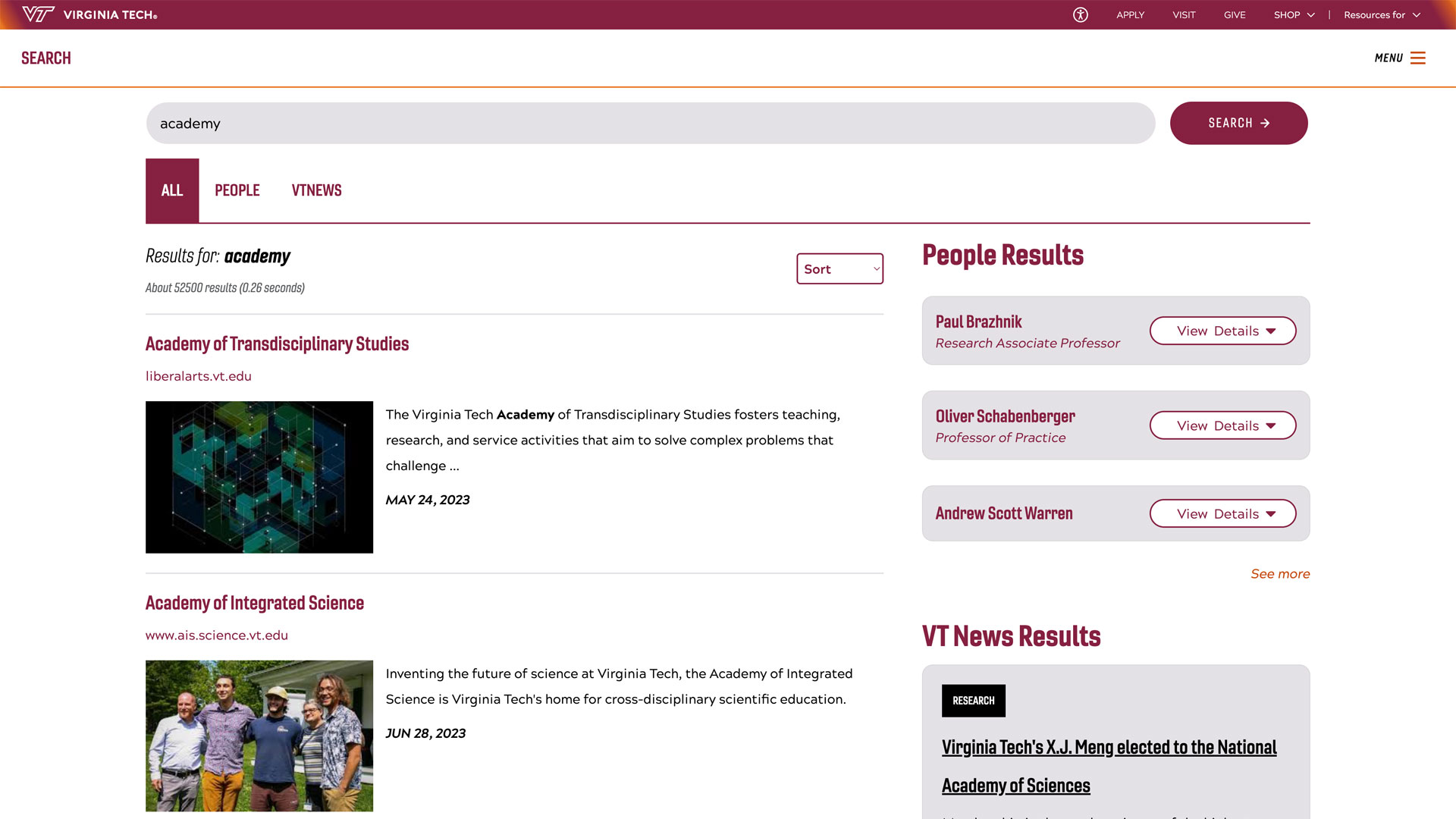Students help National Park Service improve interpretive programs for visitors
Mary Grace Larson and Maia Caddle in Great Smoky Mountains NP

As part of a National Science Foundation study, Virginia Tech graduate students visited dozens of national parks to make the already world-class experience even better.
Writer and historian Wallace Stegner called America’s National Parks: “The best idea we ever had. Absolutely American. Absolutely democratic, they reflect us at our best rather than our worst.”
That quote is so important to the National Park Service, that the organization displays it prominently. While the beauty of the national parks speaks for itself, the Park Service wants to continually improve the visitor experience.
As part of that effort, the Park Service, along with the National Science Foundation, is funding a study at Virginia Tech and Clemson University, with Virginia Tech’s Marc Stern and Clemson’s Bob Powell as co-principal investigators. The project is a large-scale national study seeking to understand what makes interpretive ranger programs effective.
From park rangers to graduate students
When the announcement seeking graduate students for the study went out, Mary Grace Larson and Maia Caddle were each working as rangers for the Park Service. They liked the opportunity to work on a project that would help the Park Service while they earned their master's degrees. When they were selected from about 60 applicants, they came to Blacksburg to be in a cohort of graduate students in the Department of Forest Resources and Environmental Conservation.
Larson, a Minnesota native who graduated from the University of Wisconsin, had to look up Blacksburg on a map. She was working as a ranger at Glacier National Park in Montana.
“My research focuses on how climate change is communicated in ranger programs across the National Park Service. I’m particularly interested in programs that are more likely to incorporate climate change content,” she said.
Caddle, a University of Maryland graduate, worked as a seasonal ranger, moving every six months. She started at Capitol Reef National Park in Utah, then went to Devils Tower National Monument in Wyoming. She spent two seasons at Dinosaur National Monument on the Utah-Colorado border and then worked a winter season at Big Cypress National Preserve in Florida.
“My thesis focuses on a particular style of ranger-led programs called Audience-Centered Experience programs,” she said. “These are more conversational and interactive compared to traditional lecture-style programs. I’m analyzing how these programs unfold, whether visitors enjoy them, and what kinds of outcomes they produce.”
Stern said roughly 10 percent of the over 300 million annual visitors to National Park sites partake in ranger programs, so it’s important to make sure those programs are effectively providing the information important to visitors to fully understand the significance of the parks.
“During each program, we took detailed notes on what was happening, documenting the techniques the ranger used, standout moments, and key interactions,” Caddle said. “After the program, we distributed surveys to audience members to assess the impact of the program on their experience.”
The surveys asked visitors about their experience: Did they think program was personally relevant, did it deepen their connection to the place or the people around them, and how engaging did they find the presentation?
“Once we collected the surveys, we compiled all the data and assigned scores to each program based on a set of criteria — about 100 different characteristics in total,” Caddle said. “These ranged from logistical details like the start time and weather conditions to more qualitative aspects like how comfortable the interpreter seemed and how well they incorporated audience engagement.”
Most of the research team at a training at Reconstruction Era National Historical Park, we got the chance to meet the Director of the National Park Service Charles F. “Chuck” Sams III. Left to right are Jess Henry, Paige Crane, Amber Hawes, Mary Grace Larson, Maia Caddle, Charles F. “Chuck” Sams III, Dr. Bob Powell, Cami Miller

Working across the country
To date, the students, along with graduate student Paige Crane, who joined the group as a data collector last summer but is working on a thesis unrelated to this research, have observed over 400 interpretive programs in 57 national parks, including two over spring break when Larson went to Death Valley National Park and Caddle was in San Antonio Missions National Historical Park.
Crane visited more cultural parks, such as historical sites and battlefields now preserved and maintained by the Park Service.
“They were all National Park Service sites, but we focused on smaller, lesser-known cultural parks to ensure we had a diverse sample, smaller cultural sites that people may not be as familiar with,” she said. “For example, I visited Reconstruction Era National Historical Park in Beaufort, South Carolina. It played a significant role in the Reconstruction era.”
Stern said the plan is to return to the field this summer, but nothing is assured.
“We’re planning additional research this summer, though our exact locations will depend on National Park Service staffing and logistics,” Caddle said.






























